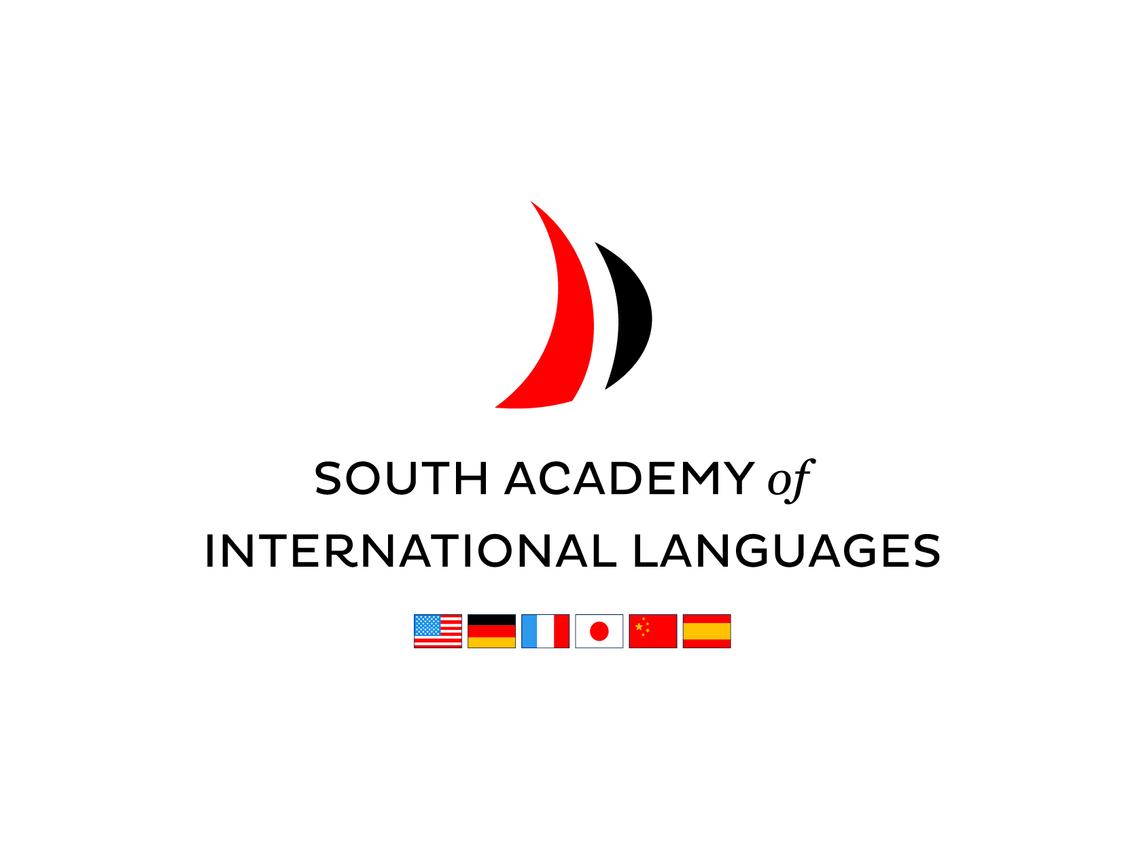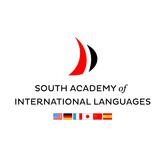Serving 1,227 students in grades Kindergarten-8, South Academy Of International Languages ranks in the top 30% of all schools in North Carolina for overall test scores (math proficiency is top 20%, and reading proficiency is top 20%).
The percentage of students achieving proficiency in math is 69% (which is higher than the North Carolina state average of 51%). The percentage of students achieving proficiency in reading/language arts is 61% (which is higher than the North Carolina state average of 50%).
The student:teacher ratio of 15:1 is equal to the North Carolina state level of 15:1.
Minority enrollment is 67% of the student body (majority Hispanic), which is higher than the North Carolina state average of 57% (majority Black and Hispanic).
Quick Stats (2025)
- School Type: Magnet School
- Grades: Kindergarten-8
- Enrollment: 1,227 students
- Student:Teacher Ratio: 15:1
- Minority Enrollment: 67%
- Overall Testing Rank: Top 30% in NC
- Math Proficiency: 69% (Top 20%)
- Reading Proficiency: 61% (Top 30%)
- Science Proficiency: 79% (Top 20%)
- Source: National Center for Education Statistics (NCES), NC Dept. of Education
Top Rankings
South Academy Of International Languages ranks among the top 20% of public schools in North Carolina for:
Category
Attribute
Math Proficiency
Science Proficiency
Diversity
School Overview
South Academy Of International Languages's student population of 1,227 students has declined by 10% over five school years.
The teacher population of 83 teachers has stayed relatively flat over five school years.
School Type
Grades Offered
Grades Kindergarten-8
Total Students
1,227 students
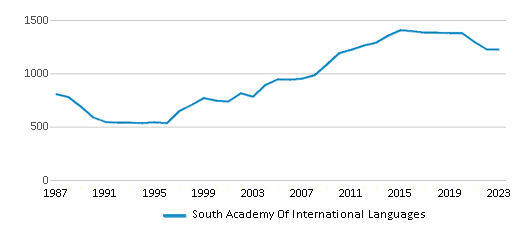
Gender %
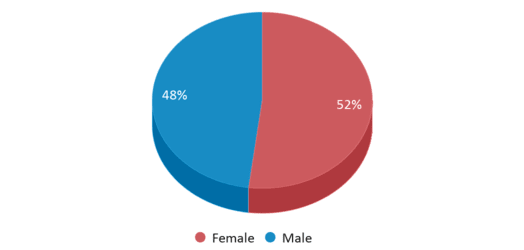
Total Classroom Teachers
83 teachers
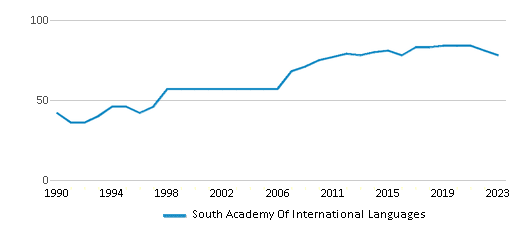
Students by Grade
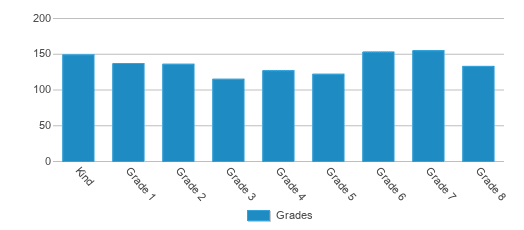
School Rankings
South Academy Of International Languages ranks within the top 30% of all 2,617 schools in North Carolina (based off of combined math and reading proficiency testing data).
The diversity score of South Academy Of International Languages is 0.74, which is more than the diversity score at state average of 0.71. The school's diversity has stayed relatively flat over five school years.
Overall Testing Rank
#544 out of 2617 schools
(Top 30%)
(Top 30%)
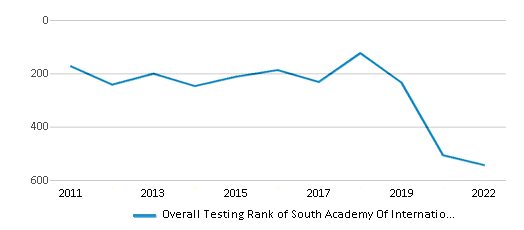
Math Test Scores (% Proficient)
69%
51%
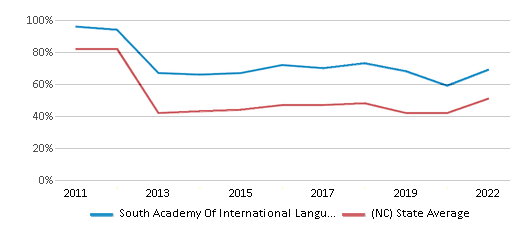
Reading/Language Arts Test Scores (% Proficient)
61%
50%
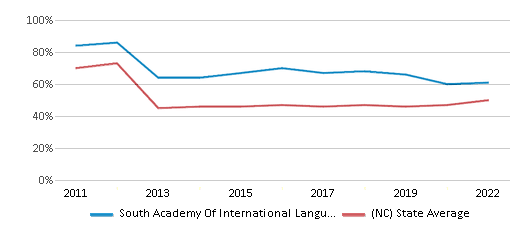
Science Test Scores (% Proficient)
79%
63%
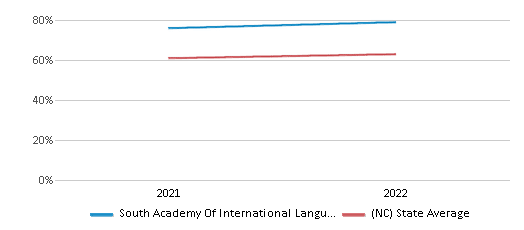
Student : Teacher Ratio
15:1
15:1
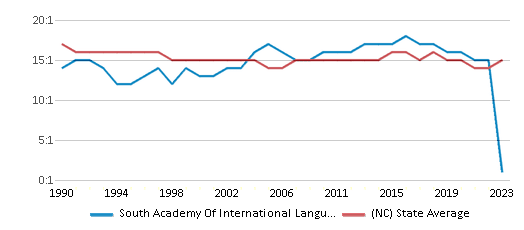
American Indian
n/a
1%
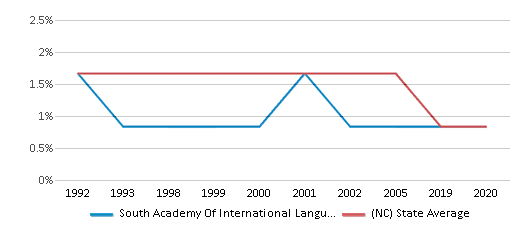
Asian
6%
4%
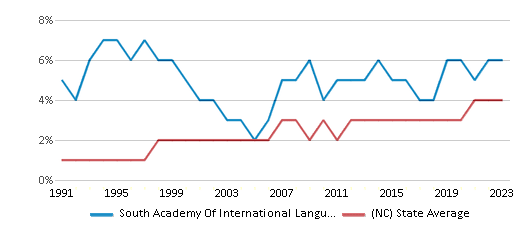
Hispanic
33%
21%
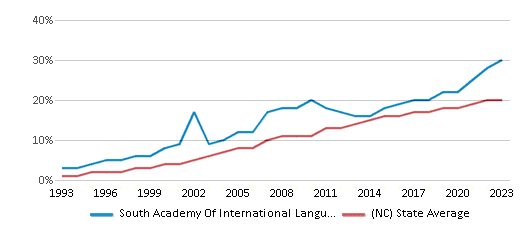
Black
20%
25%
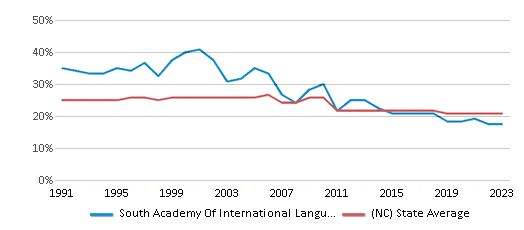
White
33%
43%

Hawaiian
n/a
n/a
Two or more races
8%
6%
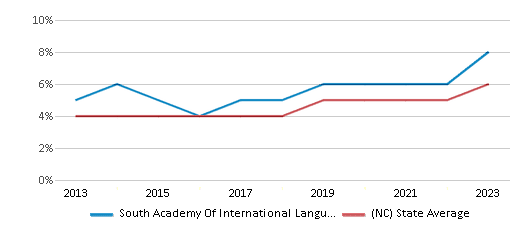
All Ethnic Groups
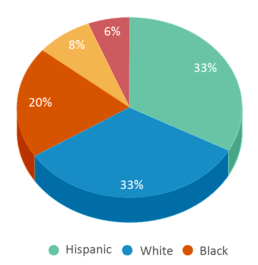
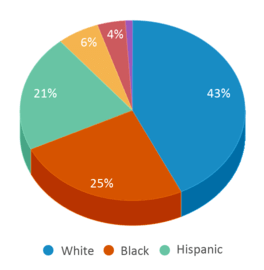

Participates in the National School Lunch Program (NSLP)
Yes
Eligible for Free Lunch
33%
68%
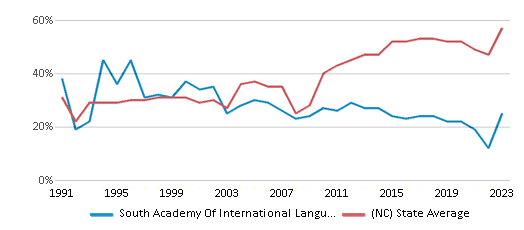
Eligible for Reduced Lunch
3%
1%

School Statewide Testing
School District Name
Source: National Center for Education Statistics (NCES), NC Dept. of Education
School Notes
- Welcome to S.A.I.L.!Weare K-8 language immersion magnet school with a long history of language-immersion teaching and academic excellence. We create bright futures in six languages and support all students in becoming globally competent citizens ready to succeed in the 21st century.Elementary students receive instruction in one of four target languages: Chinese, French, German or Japanese. All four are taught in alignment with the North Carolina curriculum. Middle school students may choose from a wide range of traditional elective courses, as well as other electives that emphasize the different languages and cultures as they continue to demonstrate their knowledge and competence of global themes.
Profile last updated: 02/09/2025
Frequently Asked Questions
What is South Academy Of International Languages's ranking?
South Academy Of International Languages is ranked #544 out of 2,617 schools, which ranks it among the top 30% of public schools in North Carolina.
What schools are South Academy Of International Languages often compared to?
South Academy Of International Languagesis often viewed alongside schools like Collinswood Language Academy, Nations Ford Elementary School by visitors of our site.
What percent of students have achieved state testing proficiency in math and reading?
69% of students have achieved math proficiency (compared to the 51% NC state average), while 61% of students have achieved reading proficiency (compared to the 50% NC state average).
How many students attend South Academy Of International Languages?
1,227 students attend South Academy Of International Languages.
What is the racial composition of the student body?
33% of South Academy Of International Languages students are Hispanic, 33% of students are White, 20% of students are Black, 8% of students are Two or more races, and 6% of students are Asian.
What is the student:teacher ratio of South Academy Of International Languages?
South Academy Of International Languages has a student ration of 15:1, which is equal to the North Carolina state average of 15:1.
What grades does South Academy Of International Languages offer ?
South Academy Of International Languages offers enrollment in grades Kindergarten-8
What school district is South Academy Of International Languages part of?
South Academy Of International Languages is part of Charlotte-Mecklenburg Schools School District.
In what neighborhood is South Academy Of International Languages located?
South Academy Of International Languages is located in the Montclaire South neighborhood of Charlotte, NC. There are 2 other public schools located in Montclaire South.
School Reviews
Review South Academy Of International Languages. Reviews should be a few sentences in length. Please include any comments on:
- Quality of academic programs, teachers, and facilities
- Availability of music, art, sports and other extracurricular activities
Recent Articles

What Is A Charter School?
Explore the world of charter schools in this comprehensive guide. Learn about their history, how they operate, and the pros and cons of this educational innovation. Discover key facts about charter schools, including admission policies, demographics, and funding, as well as what to look for when considering a charter school for your child.

10 Reasons Why High School Sports Benefit Students
Discover the 10 compelling reasons why high school sports are beneficial for students. This comprehensive article explores how athletics enhance academic performance, foster personal growth, and develop crucial life skills. From improved fitness and time management to leadership development and community representation, learn why participating in high school sports can be a game-changer for students' overall success and well-being.

February 05, 2025
Understanding the U.S. Department of Education: Structure, Impact, and EvolutionWe explore how the Department of Education shapes American education, from its cabinet-level leadership to its impact on millions of students, written for general audiences seeking clarity on this vital institution.


